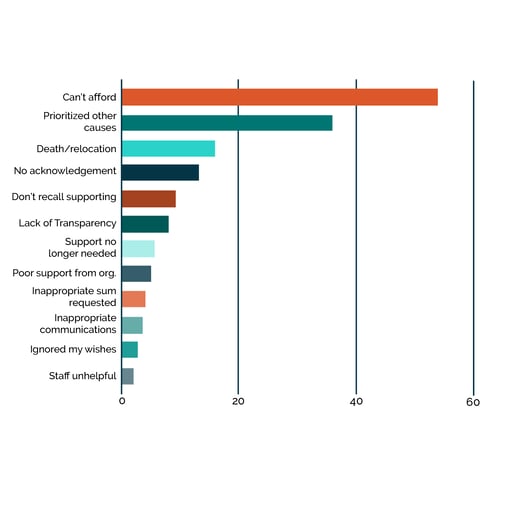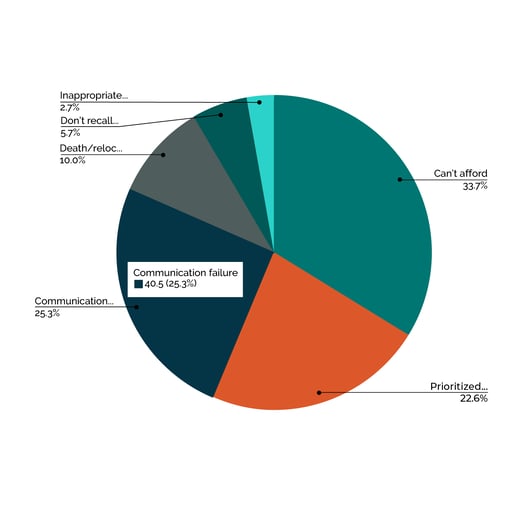Donor Relationships 101: Don't Just Manage Your Donors, Nurture Them.

In a very real way, donors are the lifeblood of your nonprofit. Without the funding they supply, the “organs” of your organization cannot function. So how do you maintain a healthy system and ensure that the funds you need to do your work will be there when it matters most?
Growing your donor database is always important, but the ability to attract new donors is of limited value if you’re not actively nurturing and developing relationships with the donors you’ve got. Most experts will tell you that donor retention is key, and they’re right, but keeping donors around is just one of several benefits of building and maintaining healthy relationships with your constituents, a process often referred to as “stewardship.” Stewardship means not only maintaining a flow of reliable funds, but turning new donors into active donors, active donors into loyal donors, and loyal donors into evangelists for your work and your organization.
The Numbers
First-year donor retention rates range from 22% to 29% on average. But fundraising expert Adrian Sargeant says, “...even small improvements in retention rates translate to whopping improvements in the lifetime value of the fundraising database. So a 10% increase in loyalty now can lead to 200% increase.”
Why do donors leave? In his 2001 study, Sargeant asked former donors of ten national charities what caused them to stop giving to a particular cause. Here’s what they said:

Several of the above answers arguably fall under the heading “Communication failure,” and when we combine them, we see that over 25% of donors potentially defected due to poor communication on the part of the organization. And if you assume that donors are prioritizing other charities because you didn’t engage them, that number goes up to 47%.

Relationship Goals
When we talk about donor retention, we’re talking about making sure that new donors become repeat donors, but if we’re doing it right, we’re really talking about developing a relationship with each donor based on what we know about them. So while we absolutely want to keep our donors as long as possible, just keeping them isn’t enough--for us or for them. The people who provide the funding that allows us to do our work are individuals who want to feel like their individual contribution means something.
Specifically, a developing relationship with a donor should include the following goals:
- Engagement - the donor feels informed and engaged with the cause and the organization due to appropriate communications, transparency, and adherence to preferences.
- Investment - the donor feels not only financially invested in the cause and the organization but also a sense of ownership, as though they’re helping to drive progress. One way to maximize the impact of donor contributions, and reinforce that sense of investment, is by leveraging matching gift programs. Arreva’s integration with Double the Donation makes it easy to incorporate corporate gift-matching into your fundraising strategy.
- Advocacy - ideally, the donor develops (or you develop in your donor) enough engagement and investment in your work that they become an advocate for your organization, helping to spread the word and bring in funds from their networks.
Achieving these goals requires a process that includes segmenting donors into useful categories, communicating with them appropriately and authentically, and giving them ample opportunity to provide feedback and participate in driving your goals and successes.
Segmentation
Developing a relationship with a donor means understanding as much as possible about that individual, including their career, hobbies, preferences, and more so your communications hit home and your fundraising asks, event invitations and campaign requests are appropriate and welcome. And that’s where segmentation comes in.
Who are your donors, where are you in your relationship with donors, and what do your donors want/need from you right now? Segmentation tells you all this and more. Is this a first-time donor? Send a thank you and a welcome. Has this donor participated in a recent campaign? Give them a sense of what you’ve achieved through their efforts and let them know about upcoming campaigns and events they might be interested in. Is this a long-time donor? Recognize their ongoing loyalty and impact in a personal way. The more you know about your donors, the better you can craft your communications to develop and solidify relationships with your donors.
“For each donor group, nonprofits should determine the level of engagement necessary to effectively manage the relationship and seek to involve donors accordingly. For larger donors (e.g., foundations, high net worth individuals), this may mean pursuing a relationship that goes beyond the provision of capital to become a partnership to achieve shared goals. For smaller donors (e.g., online donors), this may mean finding opportunities for more informal engagement (e.g., through fundraisers, volunteering or social media).” -The Bridgespan Group
Donor segmentation just means tagging your donors based on their behavior and preferences so you can categorize them--and communicate with them--appropriately. Here are just a few useful ways you might segment donors:
- Level of giving - donor “tiers” help you target asks appropriately
- Motivation for giving - identify donors with a personal stake in your cause
- Frequency of donations - when is the right time to ask?
- Needs/requirements - email or phone? Special access at events?
- Social media engagement - find your online advocates
- Prior participation - what appeals to this donor?
- Industry - target for specific events and asks
- Hobbies - engage interests
Communication
Your first and possibly most important communication with a new donor should be a heartfelt “thank you” for their initial donation. It’s your first chance to let them know how much you appreciate the fact that they chose to send a portion of their hard-earned cash your way, and if you don’t use it, it may be your last--after all, Sargeant’s survey found that 13% of donors quit donating at least partly because the charity didn’t acknowledge their donation.
And while too much of anything can be...well, too much, it’s important that your “thank you” note isn’t the last time your constituents hear from you. Donors want to know where their money is going, how they’re making an impact, and who they’re helping. Experts advise aiming for 12 contacts a year, including acknowledgments, updates on successes and impact, and invitations to engage and be a part of the work you do.
As important as the timing and targeting of your communications is the connection you make, so strive for authenticity. Your goal is not just to check off a box in a process but to spark a bit of satisfaction and yes, even joy in your donors every time they hear from you. You are asking your donors to join you in a movement for change, so let them know why that movement is important to you, and give them a sense of what it’s like to take the resources they provide and use them to make real change.
Storytelling
As we’ve discussed at length [elsewhere], stories of the actual people your organization--and your donors’ dollars--are working to help are absolutely critical in engaging donors on an emotional level with the work you do and the people you do it for. And the more individual the story, the better. This is partly--or perhaps largely--due to a phenomenon known as the “identifiable victim effect,” which describes the tendency for humans to be more willing to give aid--and to offer more substantial aid--when they can identify a specific victim who is impacted by the problem. While we’d all like to think we’d help just because we know a problem exists, hearing or reading a story about a specific person facing that problem creates an emotional connection that drives us to act.
Engagement and Ownership
In addition to regular updates telling donors who and how their donations are helping, keeping donors loyal to your cause and your organization requires engaging them in the work on multiple levels. Asking for input and requesting participation in programs intended to guide your organization’s priorities great way to let your donors know you value their input while ensuring that your nonprofit benefits from a wide range of perspectives.
Surveys are an excellent tool in this regard, and if you’ve done a good job with segmentation, your surveys can be targeted to particular donors. Not only will this yield more pertinent results, it tells donors you care about them as people. The more you acknowledge donors as individuals, the better they’re going to feel, and the better your donors feel about you and your work, the more loyal they become. A survey targeted, for example, to C-level executives might acknowledge their industry leadership and expertise, and in doing so, let donors know you value their experience and want their input as experts in their fields
Along similar lines, creating a donor advisory panel and an internal listening process engages donors in the cause, gives them a sense of ownership over the work, and invests them further in your organization.
Events
With donors segmented by factors like location, industry, and interests, you can include them in your invite lists for events from fundraising dinners and galas to convention parties and local meetups. Each event in physical space is an opportunity to shake hands with your donors and thank them personally, tell them face-to-face what they’re helping you achieve, and even present new initiatives or introduce donors to some of the people benefitting from your work and their generosity.
Keep It Moving
Bottom line, and we can’t stress this enough, this is a relationship, and it needs to be nurtured like any other. By paying attention to who your donors are and what motivates them to give to your cause, by connecting with them on a human level and maintaining an awareness of their humanity, and by treating them with the loyalty you hope they’ll show your organization, you can build solid, long-term donor relationships and make your nonprofit stronger than ever.

